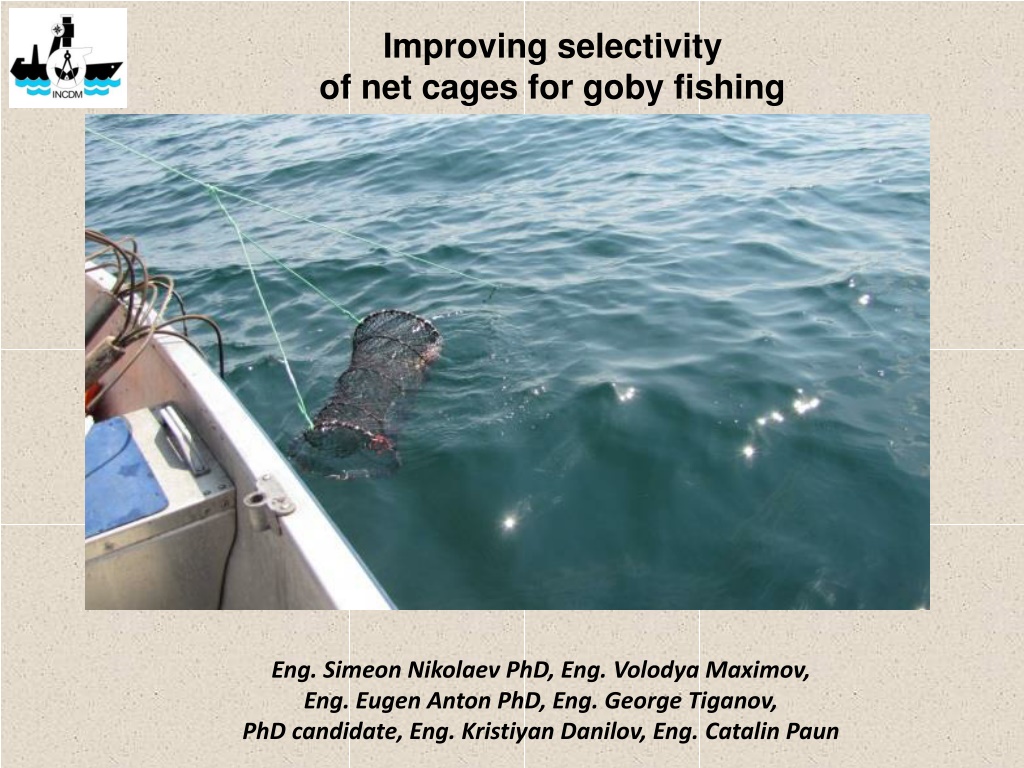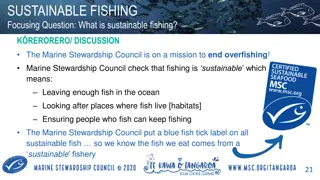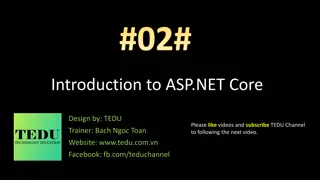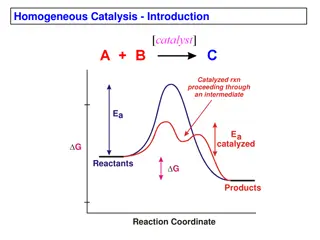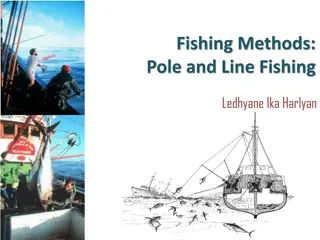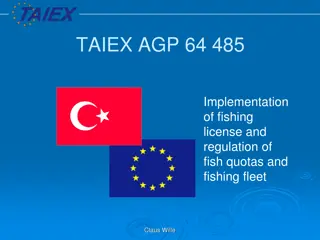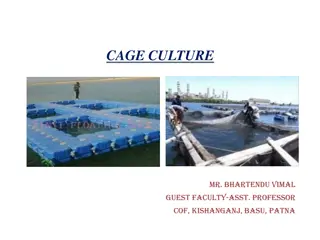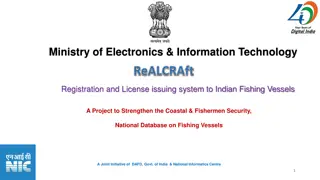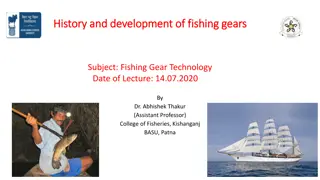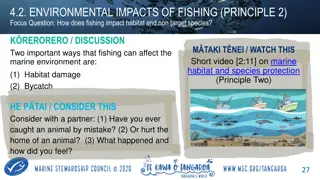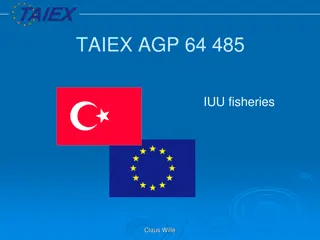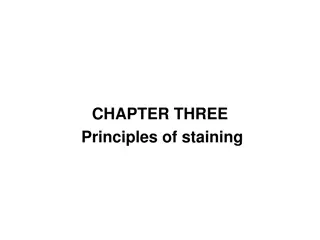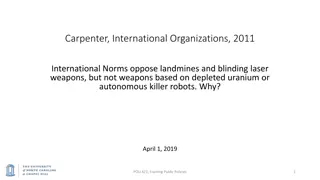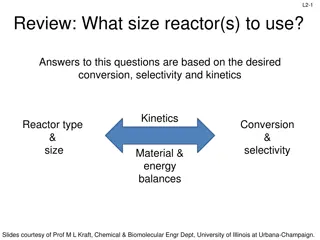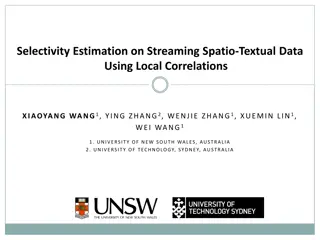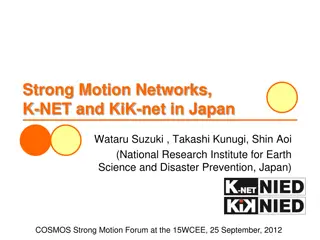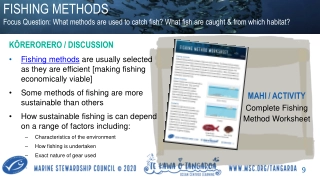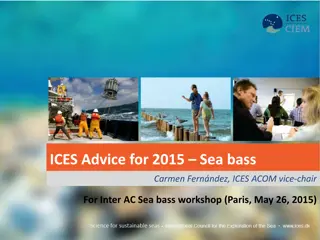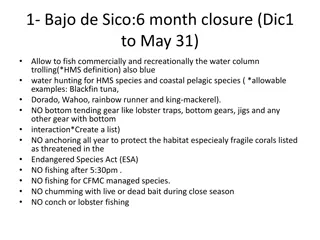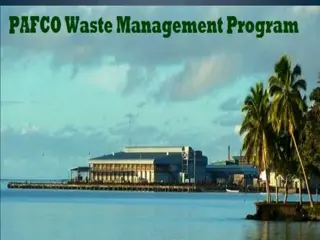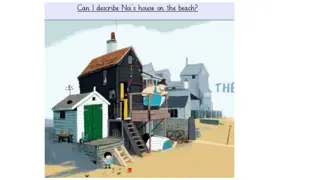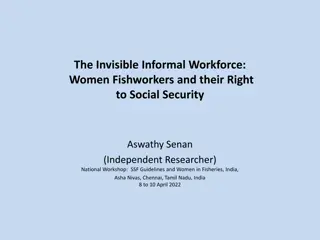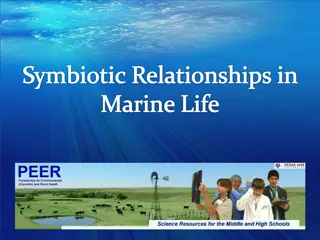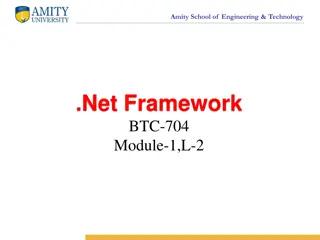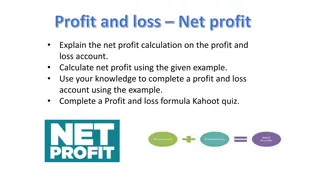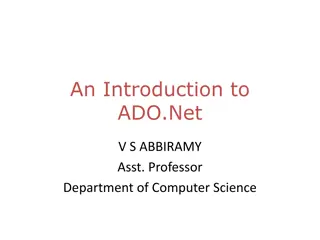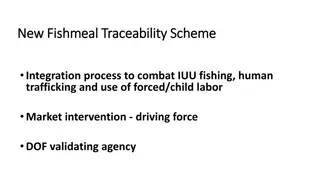Enhancing Selectivity of Net Cages for Goby Fishing
Research efforts focused on improving the selectivity of net cages used for goby fishing to avoid detrimental impacts on the goby stock. Various mesh sizes were tested, and plastic nets of different dimensions were incorporated to enhance selectivity and release juvenile gobies. Collaboration between research institutes and fishing operators contributed to the development and testing of more efficient fishing tools.
Download Presentation

Please find below an Image/Link to download the presentation.
The content on the website is provided AS IS for your information and personal use only. It may not be sold, licensed, or shared on other websites without obtaining consent from the author. Download presentation by click this link. If you encounter any issues during the download, it is possible that the publisher has removed the file from their server.
E N D
Presentation Transcript
Improving selectivity of net cages for goby fishing Eng. Simeon Nikolaev PhD, Eng. Volodya Maximov, Eng. Eugen Anton PhD, Eng. George Tiganov, PhD candidate, Eng. Kristiyan Danilov, Eng. Catalin Paun
Fish of the gobiidae species have been since ancient times subject to commercial and amateur fishing. Although until the year 2010 goby fishing activities were conducted by means of tools such as gillnets, longlines and ledgering weights, since the beginning of 2011 fishermen have also been using tools of the trap type net cages with bait for gobies - a piece of equipment with proven profitability (low exploitation costs and considerable catch). Net cages used by professional fisherman for goby fishing, however, have one disadvantage, namely the small mesh size of the net (the length of the side = 10mm) is of dimensions which allow non-selective trapping of smaller goby specimen which have not yet reached maturity. Furthermore, the four-year period (2011 2014) saw a considerable increase in fishing effort using such tools. The increase in fishing effort using the cage net tool and respectively its application in the making of nets with a mesh diameter (side) below selectivity requirements may considerably harm goby stock in the sea.
Research activities were conducted at sea to collect observational data and data from biometric measurements on goby specimens trapped in cage nets of different mesh sizes (10, 18, 20 and 22 mm in side length). These research activities and the installation of the cages themselves were conducted by the INCDM Institute in Constanta in collaboration with economic operators and the companies S.C. Seaking Fish SRL and Mircom SRL under a Collaboration agreement between said organisations. For the purpose of the above research activities, the INCDM Institute provided 30 cage nets for goby fishing selected from models available in specialised stores, having the following structural characteristics: total length 550 mm, diameter of the helical framing ring of 250 mm and mesh with hole dimensions of 10mm.
The final goal of the conducted experiments was to improve selectivity of the fishing tool. The INCDM Institute secured further 3 varieties of plastic nets with a thread diameter of 1 1.3 mm and mesh size of 18, 20 and 22 mm which were used to make another type of cover for the cages used in the experiment. To do this, the original nets of 24 out of the 30 cages procured for the experiment were replaced with plastic nets, thus resulting, in addition to the 6 cages with nets of mesh sizes of 10 mm, in further 24 cages, grouped in batches of 8 wrapped in nets with mesh dimensions of 18, 20, and 22 mm, respectively. Nets were mounted at a hanging coefficient of 0.707 in order to obtain a square-shaped net mesh (this shape allows the release of a larger percentage of not fully grown goby fish when compared to diamond-shaped nets).
The table shows the recorded measurements for the length and circumference of goby fish caught in cage nets during the experiments grouped by the different values of the dimensions of the net mesh. Mesh dimensions Maximum caught length Maximum circumference caught Pmax= 116 mm Pmax= 118 mm Pmax= 123 mm Pmax= 105 mm Minimal caught length Minimal circumference caught Pmin= 40mm Pmin= 61 mm Pmin= 74 mm Pmin= 88 mm a = 10 mm Lmax= 236 mm Lmin= 257 mm Lmin= 258 mm Lmin= 185 mm Lmin= 93mm a = 18 mm Lmin= 138 mm Lmin= 142 mm Lmin= 168 mm a = 20 mm a = 22 mm A total of 4 expeditions were organised, 2 in the area of Mangalia in March and April and 2 in the area of Constanta in the months of August and September, where fishing activities were conducted at depths of 7 17 m. The time the laid traps spent in the sea water was 24 hours. The different zones registered different catch in terms and quantity and type of fish. Cage net capacity and selectiveness in terms of goby fishing depends both on the mesh size of the net and on other factors, such as: structural shape (the shape of the mesh as defined by the so-called hanging coefficient), visibility (the colour of the fibre from which the net is made), the geometrical shape at the time of laying, the type of bait being used depending on the season and its condition, as well as on fish behaviour, respectively.
When goby fishing is concerned, since their bodies are spindle-shaped (approximately cylindrical), the optimal value of the so-called hanging coefficient in terms of the geometry of the mesh of the net is 0.707, as it facilitates the release of not fully grown goby specimens from the cage. Another advantage of nets with hanging coefficient of 0.707 lies in the fact that they require less material for their making. Changes in mesh shape depending on the horizontal hanging coefficient
CONCLUSIONS AND RECOMMENDATIONS The following condition must be met in order to conduct selective fishing activities: the minimal length of caught fish must be greater than the length of the fish at the time when it first reaches maturity in order to ensure at least one single reproduction cycle of the species. Having reviewed the collected data, it may be concluded that in order to trap goby specimens with a minimal total length (Lmin) of 135 mm and a minimal cross section (Pmin)) of 75 mm, the optimal solution is to use cage nets whose mesh dimensions are 20 mm per side, as they cam trap goby specimens with lengths Lmin 135 mm and circumference Pmin 75, which corresponds to goby size at the time the fish reaches first maturity, therefore attesting that it has been part of at least one reproductive cycle. Furthermore, analysis of the practical results shows that a normal catch capacity without injured specimens (due to the so-called entanglement ) and sufficient friction resistance of the net may be ensured when the ratio d/a (where d = diameter of the fibre from which the net has been woven, and a = mesh size) varies within the 0.05 - 0.06 range.
